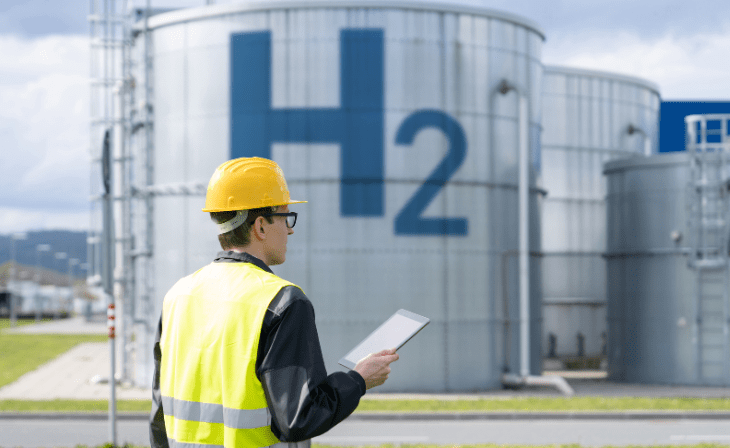If hydrogen is brought into contact with rusty (oxidized) iron, the iron is “reduced”, said Viktor Hacker from the Institute of Chemical Process Engineering and Environmental Technology at Graz University of Technology (TU) in an interview with APA. Water and the “de-rusted” metal are produced. The hydrogen is stored in it, so to speak. It can be stored and transported safely, whereas hydrogen gas is highly explosive and its transportation is problematic. If necessary, hydrogen can be extracted from the reduced iron by spraying it with water vapor. Iron oxides and high-purity hydrogen are then produced again.
Suitable for importing energy from solar and wind power plants
This method could be used to import energy from solar and wind power plants in desert regions, for example. There, the sustainably generated electricity would be used to produce hydrogen from water using electrolysis. This is used to treat oxidized iron. This turns the metal into an energy store that is easy to transport in the form of pellets. “The water flows back immediately and can be reused,” explained Hacker: “This is another important advantage of the method, because otherwise you would have to transport vast quantities of it to the desert.”
With iron pellets alone, however, this only works for two to three cycles, said the technician: “Then the material sinteres, which means the pores in it close.” As a result, the inner surface structures are largely lost. The iron pellets can then hardly be reduced at all and therefore “charge” almost no more hydrogen.
It’s the mixture that makes the difference!
The researchers therefore mixed other materials such as aluminium oxide and environmentally friendly ceramics with the iron to stabilize the pore network. They also incorporated it into a foam-like structure with high mechanical stability. This retains its structure over hundreds of “charging and discharging cycles” – i.e. after repeated reduction with the green hydrogen and oxidation with water vapor, reported Hacker.
The pellets have a diameter of three to four millimetres, which would be a practicable average, he explained: “If we make them larger, they are easier to transport, but the gas transport into the pellet is too slow. If they are smaller, they can be loaded with hydrogen more quickly, but transportation is more cumbersome.”
The hydrogen-loaded pellets are easy to store and there is hardly any energy loss. They only rust very slowly at normal temperatures, for example on a stockpile or in a container. “The temperature determines the reaction speed,” says the technician: “That’s why we run the process at 600 degrees Celsius.”
If the pellets no longer work well after a few hundred cycles and the storage efficiency is too low, “we can supply the domestic steelworks with them,” said Hacker. The material is completely harmless and can be used as a base material for many other products.
(Article published on: APA Science, 05.06.2024; Translated with DeepL.com)









